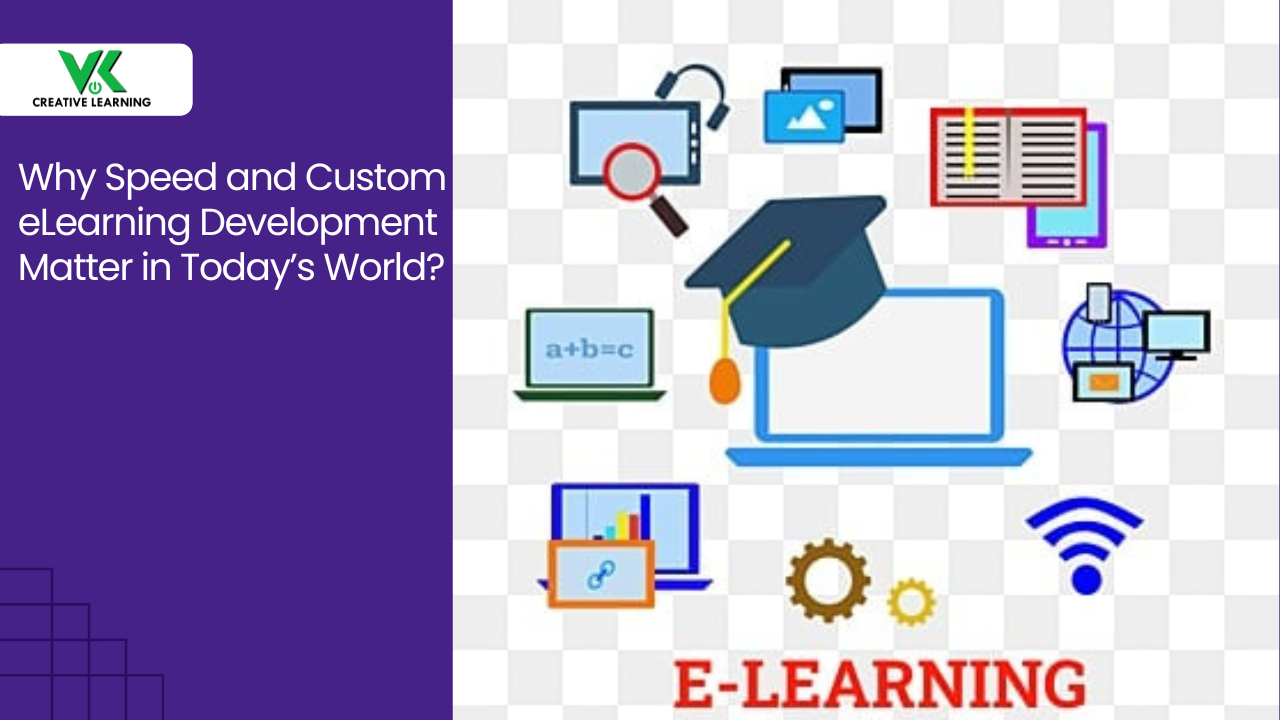Elearning Assessment - What Is It And What Is Its Importance?
June 15, 2022
Assessment is an indispensable aspect of eLearning since it enables learners to determine how well they are advancing in a course; discover their unique strengths and weaknesses, and in gauging how near they are to attaining the eLearning course goals. In addition to these aspects, it is essential that assessments engage learners and equip them for work-based learning and even boost their career prospects.
Furthermore, the development of assessments should be well-aligned with real-world applications to assist students to stand out in their workplace. Thus, assessments, in light of their significance and usefulness, might be an excellent choice for your eLearning course.
In this article, we would understand what is an eLearning assessment; the different types of assessments; the importance of assessment in eLearning solutions, and how eLearning assessment best practices can strengthen eLearning courses.
A look at what is an assessment
An e-learning assessment is a process of evaluating or keeping track of a learner’s knowledge, abilities, and attitudes in quantifiable terms using an eLearning A.I or other quantifiable technique.
Assessment is also the process of acquiring information about what learners know depending on their learning experience.
Additionally, assessments enable students to judge their own knowledge and learning progress. Typically, the data are utilized to identify improvement areas and verify that the eLearning course material fulfills learners' requirements.
What exactly is the purpose of keeping an assessment in an eLearning solution?
The purpose of assessment is to evaluate and enhance student learning; however, the specific goals might vary somewhat based on the kind of assessment performed.
Understanding Formative and Summative eLearning assessments
Formative assessments: Formative eLearning assessments are provided within the eLearning module or lesson to evaluate a student's mastery of the topic. They are most effective when they are continual, consistent, and give learners vital feedback on areas of improvement.
Summative assessments: Summative eLearning assessments, often known as final assessments, evaluate what a student has learned after finishing a course. They may assess how effectively your eLearning material serves the overall learning objectives of the course.
It's clear that eLearning assessments go beyond grades and focus on the understanding of the learners about various topics and concepts. Meaningful and well-constructed eLearning assessments prepare students for future success by requiring them to reflect, engage, and use their knowledge to respond to questions, solve issues, and convey essential information.
An overview of various forms of e-learning assessments
There are several sorts of e-learning assessments and given below are some of the most important types:
Multiple Choice
This often-used assessment approach may have one or more accurate responses. You may choose to employ multiple-choice questions when there is a clear, proper answer and feasible alternatives. For instance, you may assess a participant's capacity to apply information by posing potential replies to a real-world scenario.
Drop and Drag
Drag-and-drop questions enable students to search, rank, and organize alternatives rather than just selecting one. This question type requires learners to select an option on the screen and drag it to another location. If you want learners to specify the stages in a process or a certain order or chronology of events, drag-and-drop questions are an excellent choice.
Complete the blanks
Employ fill-in-the-blank questions when you want participants to remember particular information directly. When the solution is not shown on the screen, participants must recall it without prompting. Keep in mind that while employing fill-in-the-blank questions, you will probably need to account for several valid answers, misspelled terms, and synonyms.
True/False
True/false questions are an excellent alternative for assessing information for which there is a clear, unambiguous response. Facts, laws, and policies augur well with true/false assessments. When there is just one correct response, participants may reply swiftly. Furthermore, true/false questions can be readily assessed.
Match the following
Matching exercises may be used to test a learner's capacity to retain knowledge and capability to establish links between certain concepts or objects. Remember that while employing matching questions, learners are using judgment (to identify the answer on the screen) as opposed to memory (recalling something with the use of any prompt).
Although these are some of the most prevalent forms of e-learning assessment, there are many more to consider. Examine your e-learning authoring tool to determine its capabilities. It is advisable to employ a range of question forms to maintain the learners' attention. Also, ensure that the question types you choose are optimal for the information you want to assess.
Benefits of incorporating assessments into e-learning modules
Benefits will vary based on the used assessment type, but one underlying advantage is that companies considerably reduce the operational burden of arranging and conducting examinations. Listed below are some more advantages of incorporating assessments into eLearning solutions.
Use of electronic devices to take tests
In lieu of using pen and paper, examination applicants may use a digital pen or keyboard to answer questions.
Faster distribution and grading of results
Assessment in eLearning is also important since it allows trainers to submit marks promptly. Thus, eLearning grading is far quicker, and applicants like receiving findings quickly. Using auto-scoring questions, you may get results immediately.
Reduced accountability
With eLearning assessments, the administrative burden of arranging and conducting examinations drastically lowers. All the hassles of producing and distributing paper-based evaluations and coordinating their delivery to concerned departments are eliminated.
Access to a common platform to prepare assessments
Working on a common eLearning platform enables the evaluating authority to effectively manage all of the activities necessary to prepare assessments.
Virtual assessments
With an eLearning platform, assessing authorities are not constrained to providing exams in physical test centers, therefore they may administer assessments to candidates from a variety of places.
Virtual invigilation, also known as virtual proctoring, enables applicants to take a secure, standardized test assessment from the comfort of their own homes, which is less stressful and less expensive than traveling to a testing center.
Final thoughts:
The incorporation of assessments into the e-learning course modules may help an organization to understand how well an employee has understood the concepts taught during the training session. It also makes the job of the organization easy as it can be accessed through a common e-learning platform.
If you want an appealing, robust, and versatile eLearning platform with various types of assessments incorporated within it, we, at VK Creative Learning (VKCL), can help you out. We have been creating custom eLearning platforms for various industries and you can contact VKCL’s sales specialist for more info.




